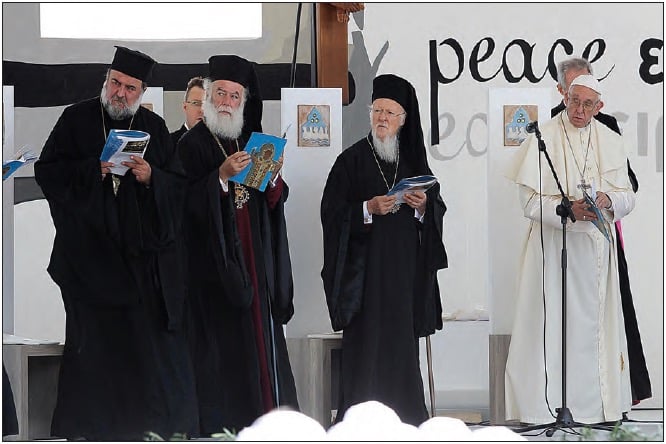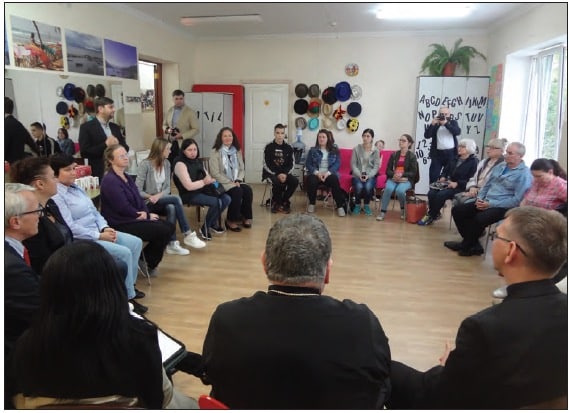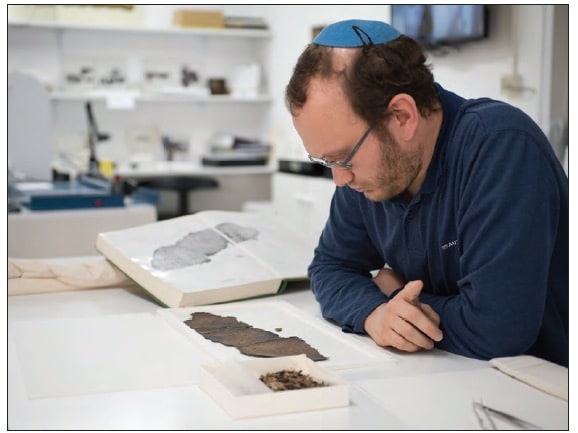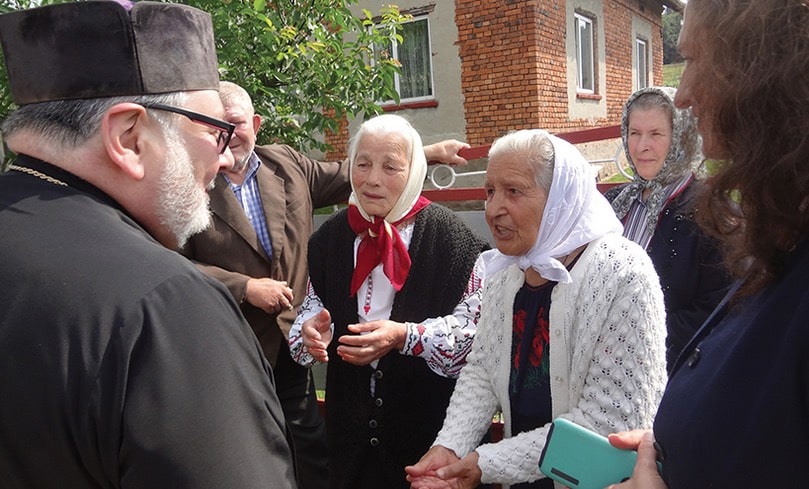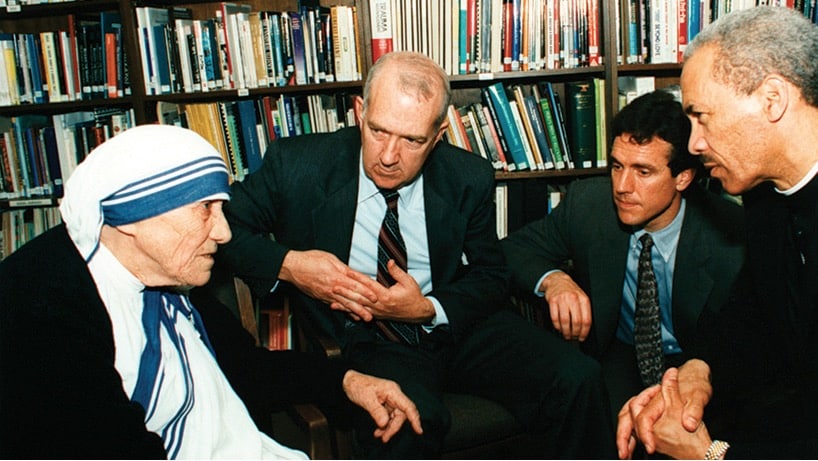Article based on Our Sunday Visitor’s participation in a June 25-July 6 solidarity visit to Ukraine made by the U.S. Conference of Catholic Bishops’ Subcommittee on Aid to the Church in Central and Eastern Europe.
People walk miles to participate in the pilgrimage to Stradch, a village about 12 miles northwest of the city of Lviv in western Ukraine. Here the Ukrainian Greek Catholic Church gathers every June 26 to honor its beatified martyrs in an outdoor liturgy before a carpet of pilgrims that stretches to the surrounding woods and hills. The liturgy is presided over by Major Archbishop Sviatoslav Shevchuk of Kiev-Halych, head of the Ukrainian Greek Catholic Church since 2011.
Near the end of the liturgy, Archbishop Shevchuk introduced some of the concelebrating bishops in attendance, including one American, Bishop John Michael Botean of the Romanian Catholic Eparchy of St. George’s, based in Canton, Ohio. Archbishop Shevchuk noted that Bishop Botean’s presence represented the solidarity of the U.S. bishops and Catholics in the United States. Bishop Botean was in fact on official business, representing the U.S. Conference of Catholic Bishops’ Subcommittee on Aid to the Church in Central and Eastern Europe, which distributes funds from a national second collection (taken up Ash Wednesday in most U.S. dioceses). Last year, the collection gave $2.3 million in funding for 75 projects in 23 countries throughout Central and Eastern Europe.
Bishop Botean’s June 25-July 6 solidarity visit brought the vibrancy of the Ukrainian Greek Catholic Church into particular focus. This Eastern rite fold makes up some 8-10 percent of the country’s population and is a fraction of the size of Ukraine’s Orthodox majority, but it’s still the largest Church in Ukraine in communion with Rome (Roman Catholics comprise only 1 percent of the population).
As the U.S.-based shepherd of a Greek Catholic Church himself, albeit one rooted in neighboring Romania, Bishop Botean told Our Sunday Visitor his background offered him “opportunities that no Latin rite bishop would ever have here.” Calling Byzantine Catholicism “an extended family for me,” he said he wanted to use the shared identity “to strengthen the sense of solidarity.”
Adversity past and present
It’s nearly impossible to disentangle the story of the Ukrainian Greek Catholic Church from the painful traumas its people have endured, past and present. For instance, the Holodomor — the Soviet-engineered famine that caused millions of Ukrainians to starve to death in 1932-33 — is a horror that elderly grandparents still remember. But Ukrainian Catholics most frequently reference the experience of their Church being driven underground from 1946 till the collapse of the Soviet Union. Bishops died in jail. Church properties were confiscated. Worship took place in people’s homes in the dead of night. Several people who spoke to OSV said, “They were like the first Christians.”
More recently, Ukraine has experienced the revolution of late 2013 and early 2014 that saw the ouster of its president. Early 2014 also saw the annexation of Crimea by Russia and the beginning of a war that continues to be fought in the country’s eastern and southern regions. Meanwhile, the new government struggles to overcome corruption and financial instability. All of these factors make the role of the U.S. bishops’ collection even more critical for the Church.
“The support is something absolutely necessary,” Archbishop Claudio Gugerotti, apostolic nuncio to Ukraine, told OSV. “There are reforms going on, but it takes an awful lot of time, and people are in need.” The economic state of the country is keenly felt in the tradition of the Ukrainian Greek Catholic Church, he noted, where over 90 percent of priests are married.
Vibrancy, evangelization
Archbishop Shevchuk called U.S. support for the Church in Ukraine “outstanding,” adding that Catholics in the United States and in his country can help each other fulfill their mission. (In the States, the Ukrainian Greek Catholic Church has eparchies in Philadelphia; Chicago; Stamford, Connecticut; and Parma, Ohio.)
Archbishop Shevchuk, who is only 48, despite his already having led Ukraine’s Greek Catholics for seven years, sees an evangelizing vitality in his Church. “Because of our evangelical position,” he said, “our Church is very attractive. We have much to say to the Ukrainian society, and young people are attracted by the witness of our Church.”
| ‘Shoulders of Giants’ |
|---|
|
In addition to the adversity it has overcome, the life of the Ukrainian Greek Catholic Church has been marked by the leaders who have transformed the Church and even helped ensure its existence from one generation to the next: Archbishop Andrey Sheptyski, metropolitan archbishop 1900-44: Archbishop Sheptyski occupies a space in the minds and hearts of Ukrainian Greek Catholics comparable to a Pope St. John Paul II, but stretched across the first half of the 20th century. Much of what Ukrainian Catholics know today was pioneered under him, such as the push for Eastern rite Catholics to reclaim more of their liturgical customs and Byzantine identity, things that had been “Romanized” over the centuries since their re-establishing communion with the pope. Archbishop Sheptyski was also a pioneer in ecumenism, and his ideas would influence the Second Vatican Council. Two years after his death, the Communists officially liquidated the Ukrainian Greek Catholic Church, driving its adherents either into Orthodox churches or underground. Cardinal Josyf Slipyi, major archbishop 1944-84: Archbishop Sheptyski’s successor was imprisoned for nearly 20 years at the beginning of Ukraine’s Communist period. Archbishop Slipyi was released in time to participate in Vatican II, though a conditional gag order prevented him from speaking about his treatment by the Soviets. He would live out his years exiled from his home country. Blessed Pope Paul VI made him a cardinal in 1965. His story is associated with the novel and subsequent film “The Shoes of the Fisherman,” in which a bishop is released from a Soviet gulag only to be made a cardinal and subsequently elected pope. Cardinal Lubomyr Husar, major archbishop 2001-11: Cardinal Husar is considered the modern father of the Ukrainian Greek Catholic Church. After coming to the United States with his family as refugees after World War II, he was ordained a priest of the Stamford, Connecticut, eparchy in 1958. In 1977, Cardinal Slipyi clandestinely ordained Husar and several others bishops, though this would not be recognized publicly till 1996. As major archbishop, Cardinal Husar hosted John Paul II on his 2001 visit to Ukraine. In 2004, he returned the seat of the major archbishop from Lviv to the capital city of Kiev, a move that provoked some Orthodox but which he saw as a necessary reclamation of the identity of the Ukrainian Greek Catholic Church. He retired in 2011 and died in 2017 at age 84. |
Tetiana Stawnychy, who oversees the USCCB National Collection for the Church in Central and Eastern Europe and who led the delegation on its two-week solidarity visit, agreed. “One of the things that I think the Church really has to offer society is that kind of prophetic speaking into civil society, into the fabric of life — through values, through Catholic social teaching,” Stawnychy told OSV.
She added that the experience of being driven underground has a consequential impact. “There’s something very genuine and vibrant about its witness. I think many of the faithful would tell you … that they stand on the shoulders of giants.”
Bishop Botean noted that he was struck by how the Ukrainian Greek Catholic Church “really gets it” when it comes to mission and that the staff are “doing really creative work, with very few resources.”
This was evident in his visits to the administrative offices of the Patriarchal Curia in both Lviv and Kiev, where a structure comparable to the USCCB — and made possible through funding from the collection — helps the bishops of the Ukrainian Greek Catholic Church to work in collaboration.
An effort like building marriage preparation programs from the ground up would sound familiar to Catholics in the United States, but other efforts are more innovative, such as intentionally facilitating exposure between the elderly and young people.
“I spent my time with my grandparents,” Father Bohdan Tymchyshyn, who oversees the family life efforts of the Patriarchal Curia, noted of his own formation in the Faith. Meeting with the U.S. delegation June 27, Father Tymchyshyn highlighted the role of family in evangelization. “Transmission of faith — it belongs to the family.” He added that families come to church together, not just for faith, but for the community that parish life engenders. “It helps the family itself and also the young people to learn from each other … especially on the moral issues.”
Buildings and people
Projects that the U.S. bishops help to fund in Ukraine have largely fallen into two areas: helping rebuild church facilities that, when returned after Communism’s collapse, were in grave disrepair; and seminary education, ongoing formation for priests (who often studied underground), and other programs. This coupling of aid was evident on a June 26 visit by the USCCB delegation to the Eparchy of Sokal-Zhovkva, where Redemptorist Bishop Mychajlo Koltun showed his guests a roofing project currently underway thanks to USCCB funds, then introduced Bishop Botean to mothers of Ukrainian soldiers who participate in a program for grieving military families.
At the House of Mercy, a center for children with special needs in Chortkiv in the Eparchy of Buchach, Stawnychy of USCCB emphasized how unheard-of such care would have been under Communism and is still unusual in Ukraine today. She noted that the Church’s efforts have allowed for this dynamic growth at the service of people in need.
“When Communism fell apart, there was suddenly this upswelling of faith, of belief that I think really helped to move each of the countries back in the direction of regaining all these things that were lost — restoring a sense of initiative, restoring a sense of trust.” The fruits, she said, are “healing, both to the human person and to society.”


